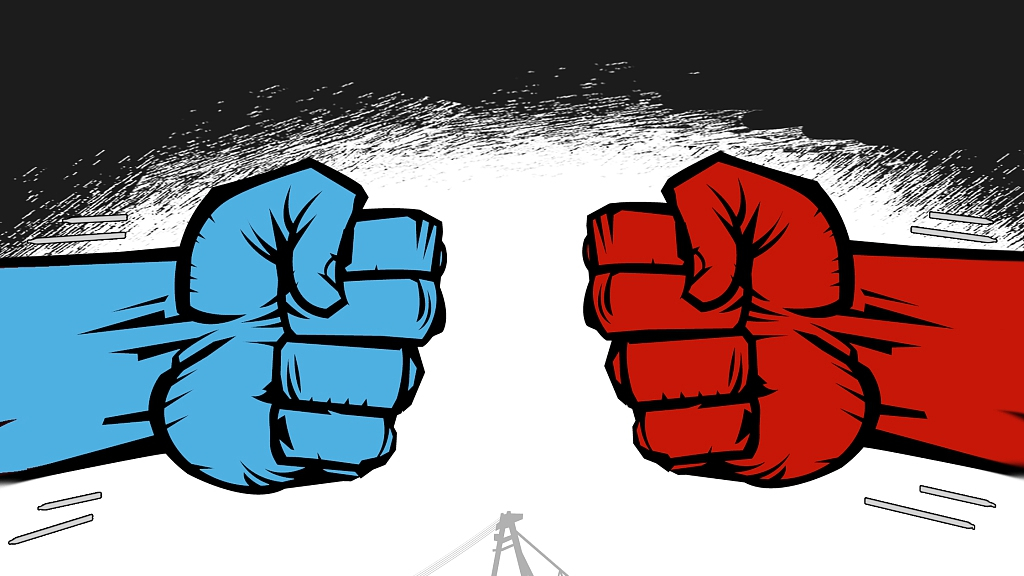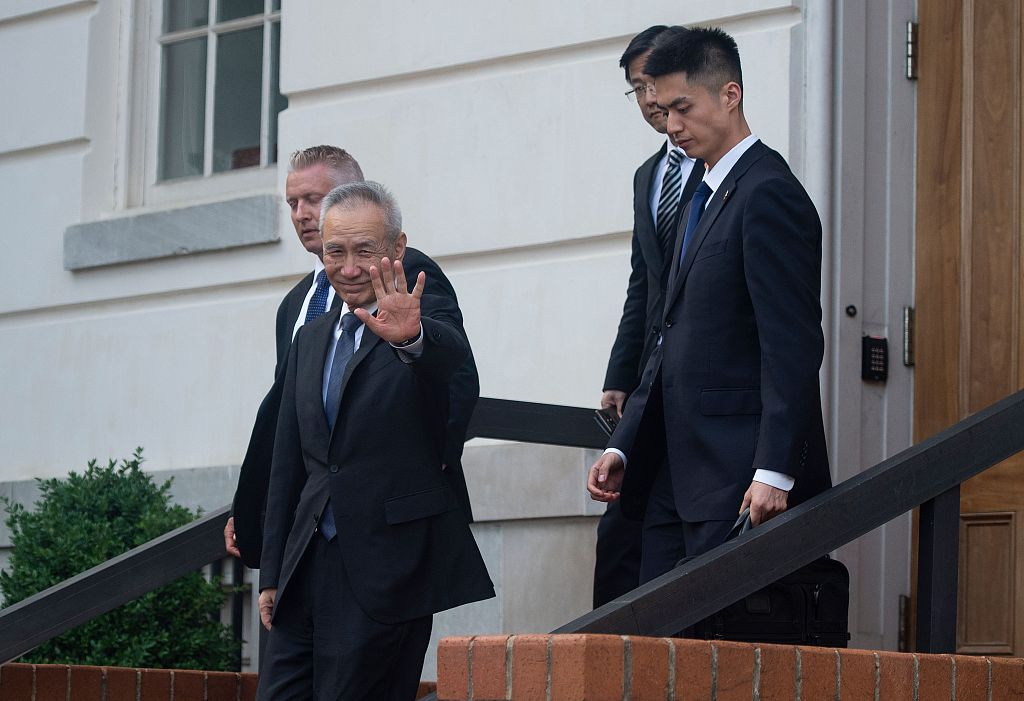
Opinion
15:05, 15-May-2019
Why the U.S. and China see negotiations differently
Shang-Jin Wei

Editor's note: Shang-Jin Wei is the former Chief Economist of the Asian Development Bank, professor of Finance and Economics at Columbia University and a visiting professor at the Australian National University. The article reflects the author's opinion, and not necessarily the views of CGTN.
Trade negotiations between the United States and China have broken down because the U.S. government says the Chinese were walking back their agreement on matters that had previously been addressed. U.S. negotiators and President Donald Trump were furious, and on May 10, Trump more than doubled U.S. tariffs on 200 billion U.S. dollars' worth of imports from China.
The lead Chinese negotiator, Liu He, told reporters that, because a final agreement was not reached, revisions were not "walked back," a line that the U.S. side does not seem to buy. The Chinese government has now retaliated, announcing that it will raise tariffs on 60 billion U.S. dollars' worth of U.S. goods.
These latest developments cast fresh doubt on prospects for a successful conclusion to the U.S.-China trade negotiations. Although it is hard to pinpoint the exact cause of the breakdown in talks, I suspect a clash of negotiating norms and styles may have played a role, in addition to differences on substance.
In an Executive MBA course on the Chinese economy that I have taught at Columbia Business School for the past 10 years, we do a mock negotiation between a U.S. and a Chinese team. We then discuss how norms and styles of negotiation may differ across cultures. One takeaway from this session is that some differences in norms of which the two sides are unaware of can cause talks to break down.

Chinese Vice Premier Liu He leaves the Office of the United States Trade Representative after tariff negotiations in Washington, DC, May 9, 2019. /VCG photo
Chinese Vice Premier Liu He leaves the Office of the United States Trade Representative after tariff negotiations in Washington, DC, May 9, 2019. /VCG photo
Consider the example of a three-day negotiation between the U.S. and Chinese teams that will cover nine topics. Let us say that the two sides have reached an agreement on the first six topics after two days of talks. On the final day, they reach an impasse on the last three points, and the Chinese side declares – suddenly, from the U.S. team's viewpoint – that they have to alter the agreement on the first six topics.
At this point, the American team may very well feel that the Chinese side is untrustworthy or insincere, and the whole negotiation may break down as a result. In my class, we discuss how talks may sometimes collapse purely due to differences in negotiating styles, without either party intending to be devious.
Most American negotiators adopt a checklist approach: if they wish to cover nine topics, they would like to reach agreement on each one in turn. The Chinese, by contrast, are accustomed to taking a more holistic approach, and follow a norm of "nothing is agreed until everything is agreed."
In the above example, when the Chinese side agreed to positions on the first six topics, they had certain expectations about how the last three points would look at the end of the negotiations. When the discussion about these three topics turned out to be quite different from what they had expected, they asked to revisit the first six, because the various tradeoffs among the nine topics had changed.
If the above impasse had occurred between two opposing Chinese negotiating teams, neither side would have found it strange had the other asked to revisit the first six topics. Each would have expected the "agreement" on these six points to be only temporary, and subject to revision based on the outcome of the discussions about the last three topics.
So, what should negotiators with different cultural backgrounds do? In my class, I suggest to the students that before their two teams sit down to negotiate, they should first discuss and try to agree on the norms that will govern the talks – and not simply assume that their own norm is universally shared.

The New York Stock Exchange (NYSE) in New York, U.S., May 13, 2019. /VCG photo
The New York Stock Exchange (NYSE) in New York, U.S., May 13, 2019. /VCG photo
Both the checklist approach and the norm of nothing-is-agreed-until-everything-is-agreed are perfectly valid. The European Union took the latter approach in its Brexit negotiations with the United Kingdom, for example. But a clash of expectations can result if the two sides are not aware of these different styles. Discussing how to negotiate before the talks start would reduce the chances of such a clash, and therefore save a great deal of disappointment and frustration further down the road.
In any case, the nothing-is-agreed-until-everything-is-agreed approach is not inherently unfavorable to the American side. If the two sides have agreed on this norm, the U.S. team can also revisit their agreements on the first six topics if the last three do not develop in line with its expectations.
There are other differences in cultural norms of which international negotiators need to be aware. For example, the degree of importance attached to the preamble of an agreement may be very different, and a large amount of time the Chinese side may spend on probing various parameters could be regarded as a waste of time by the U.S. side.
As the U.S.-China trade talks have shown, negotiations between countries are hard enough in terms of substance. Given the importance of a trade deal between the world's two largest economies, let us hope that differences in style do not cause these talks to fail unnecessarily.
Shang-Jin Wei, the former Chief Economist of the Asian Development Bank, is Professor of Finance and Economics at Columbia University and a visiting professor at the Australian National University.
Copyright: Project Syndicate, 2019.
(If you want to contribute and have specific expertise, please contact us at opinions@cgtn.com.)

SITEMAP
Copyright © 2018 CGTN. Beijing ICP prepared NO.16065310-3
Copyright © 2018 CGTN. Beijing ICP prepared NO.16065310-3